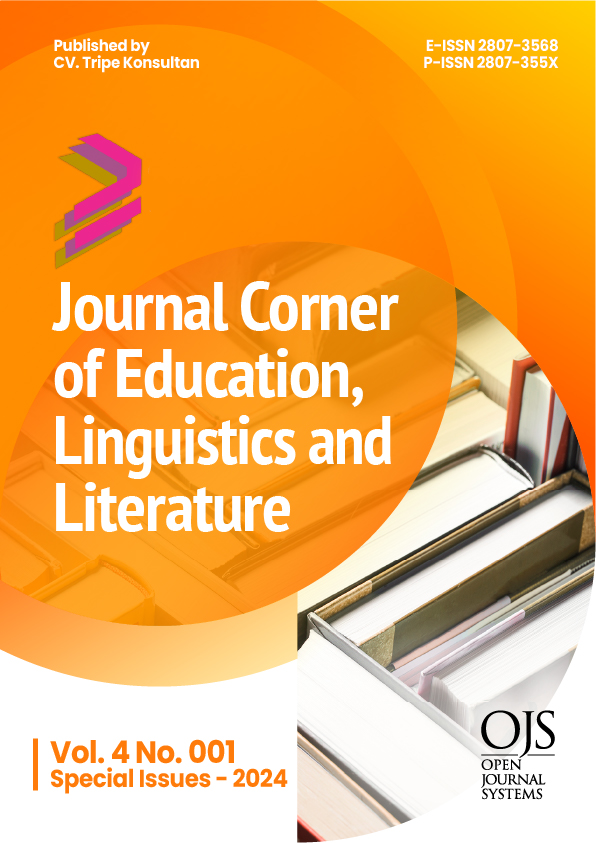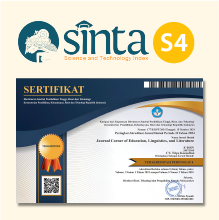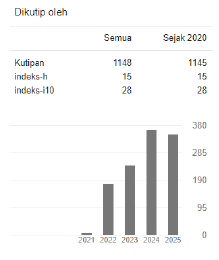The Relevance of Qiyas in Contemporary Legal Determination : Analysis of the Perspective of Usul Fiqh
 https://doi.org/10.54012/jcell.v4i001.457
https://doi.org/10.54012/jcell.v4i001.457
 Abstract views: 418
Abstract views: 418
 PDF downloads: 190
PDF downloads: 190
Keywords:
Qiyas, Usul Fiqh, Islamic Law, Ijtihad, Contemporary LawAbstract
Qiyas is one of the source Islamic law which is of a nature rational and have role important in development Islamic law in particular in answer problem contemporary that is not in a way explicit mentioned in the Qur'an and Hadith. this article aiming For analyze relevance and validity the use of qiyas in determination law to modern issues such as digital transactions reproduction artificial, and development technology financial, through approach principle fiqh. Research This use method qualitative-descriptive with approach normative as well as study literature to works classic and contemporary in field principle fiqh . Results of the analysis show that qiyas remains relevant as instruments of ijtihad in respond dynamics social and contemporary developments during fulfil conditions for valid qiyas according to the scholars. With Thus qiyas does not only functioning as tool complement but also as means important in guard flexibility and sustainability Islamic law in the modern era.
Downloads
References
Al-Ghazali, AH (2003). Al-Mustashfa min 'Ilm al-Usul (Vol. 1). Dar al-Ma'rifah. This book discusses the basic principles of ushul fiqh and provides an understanding of the qiyas method in Islamic law.
Al-Syafi'i, IM (1983). Al-Risalah (FA al-Daghistani, Trans.). Dar al-Ma'rifah. One of the basic texts of ushul fiqh which explains qiyas as a method of ijtihad.
Al-Syatibi, I. (2006). Al-Muwafaqat fi Usul al-Shariah (Vol. 2). Dar al-Kutub al-'Ilmiyyah. Discusses maqashid sharia and its relevance to the application of qiyas in legal determination.
Ibn Qayyim, A. (2001). I'lam al-Muwaqqi'in 'An Rabb al-'Alamin (Vol. 1). Dar al-Fikr. Book classic This review about the determination process Islamic law including application of qiyas.
Kamali, MH (2003). Principles of Islamic Jurisprudence . Islamic Texts Society. Presenting guide complete about principles base fiqh and ijtihad, with discussion about qiyas as instrument main in development Islamic law .
MUI. (2019). Fatwa of the Indonesian Ulema Council on Bitcoin and Cryptocurrency Transactions . Retrieved from http://mui.or.id Provide guide Islamic law regarding development technology financial relevant with the use of qiyas in overcome issues contemporary .
Rahman, F. (1982). Islamic Law: An Introduction . Routledge & Kegan Paul. Book This give description general about Islamic law and ways application of ijtihad in modern context .
Sardar, Z. (2003). Islamic Futures: The Shape of Ideas to Come . Mansell Publishing. Serve view futuristic about Islamic law and its application in an increasingly global world connected and growing rapidly .
Zaman, MQ (2002). Islamic Law and the Challenges of Modernity . Cambridge University Press. Book This discuss challenges faced Islamic law in respond development social political and modern technology .
Qadri, S. (2017). The Evolution of Islamic Jurisprudence in the Modern World . Oxford University Press. Discuss change in ijtihad and method fiqh including application of qiyas in context modern law .
Moosa, E. (2005). The Islamic Revival and the Role of Islamic Law in the Modern World . University of North Carolina Press. Book This review resurrection Islamic law in the modern world and how principles base like qiyas can used For respond challenges of the times.
Zia, M.A. (2011). Technology and Islamic Law: A Contemporary Approach . Kazi Publications.
Downloads
Published
How to Cite
Issue
Section
License
Copyright (c) 2024 Abdul Halim, Muhlizar

This work is licensed under a Creative Commons Attribution-ShareAlike 4.0 International License.
All articles published in the Journal Corner of Education, Linguistics, and Literature are licensed under the Creative Commons Attribution-ShareAlike License (CC BY-SA).

















